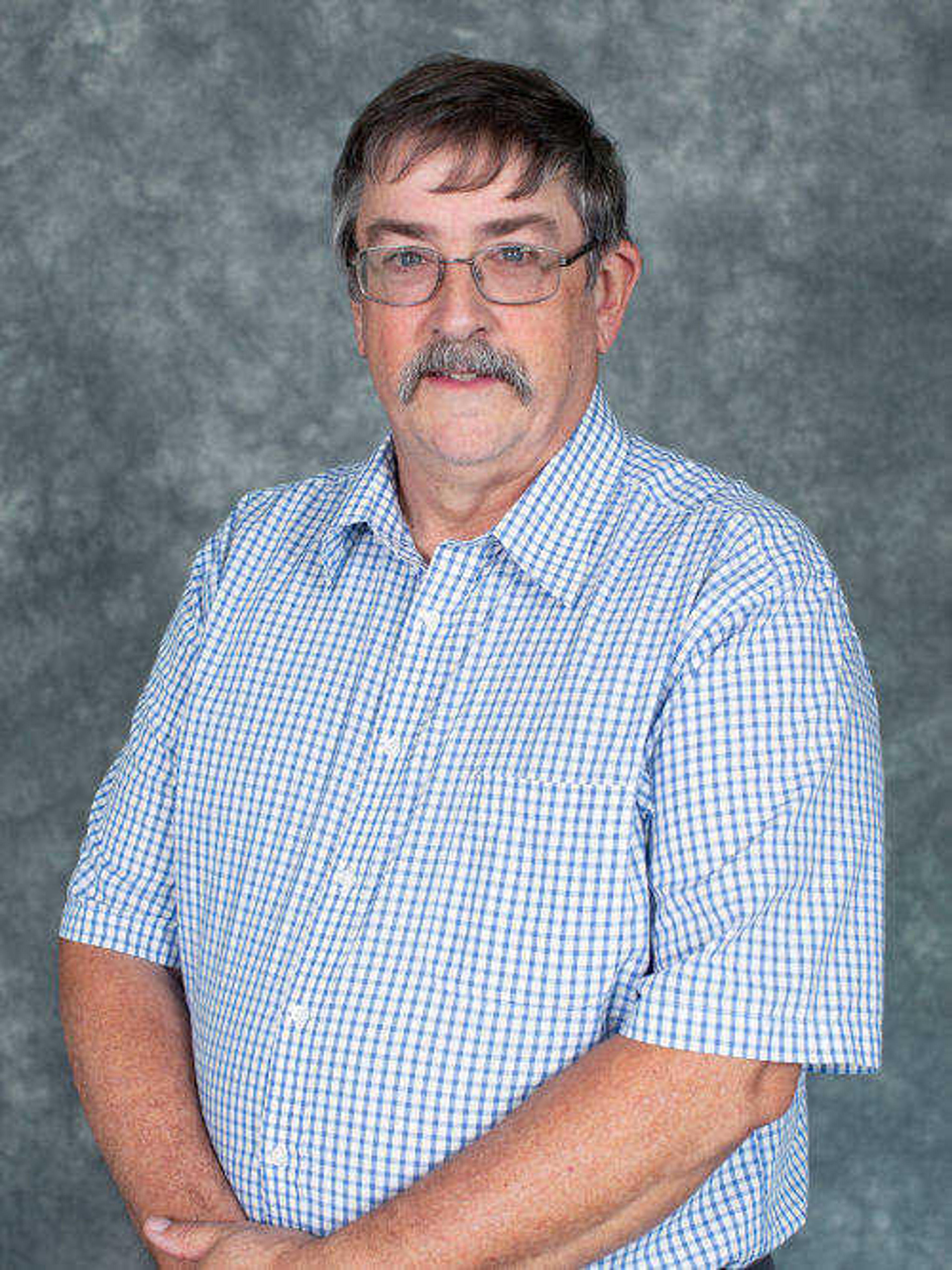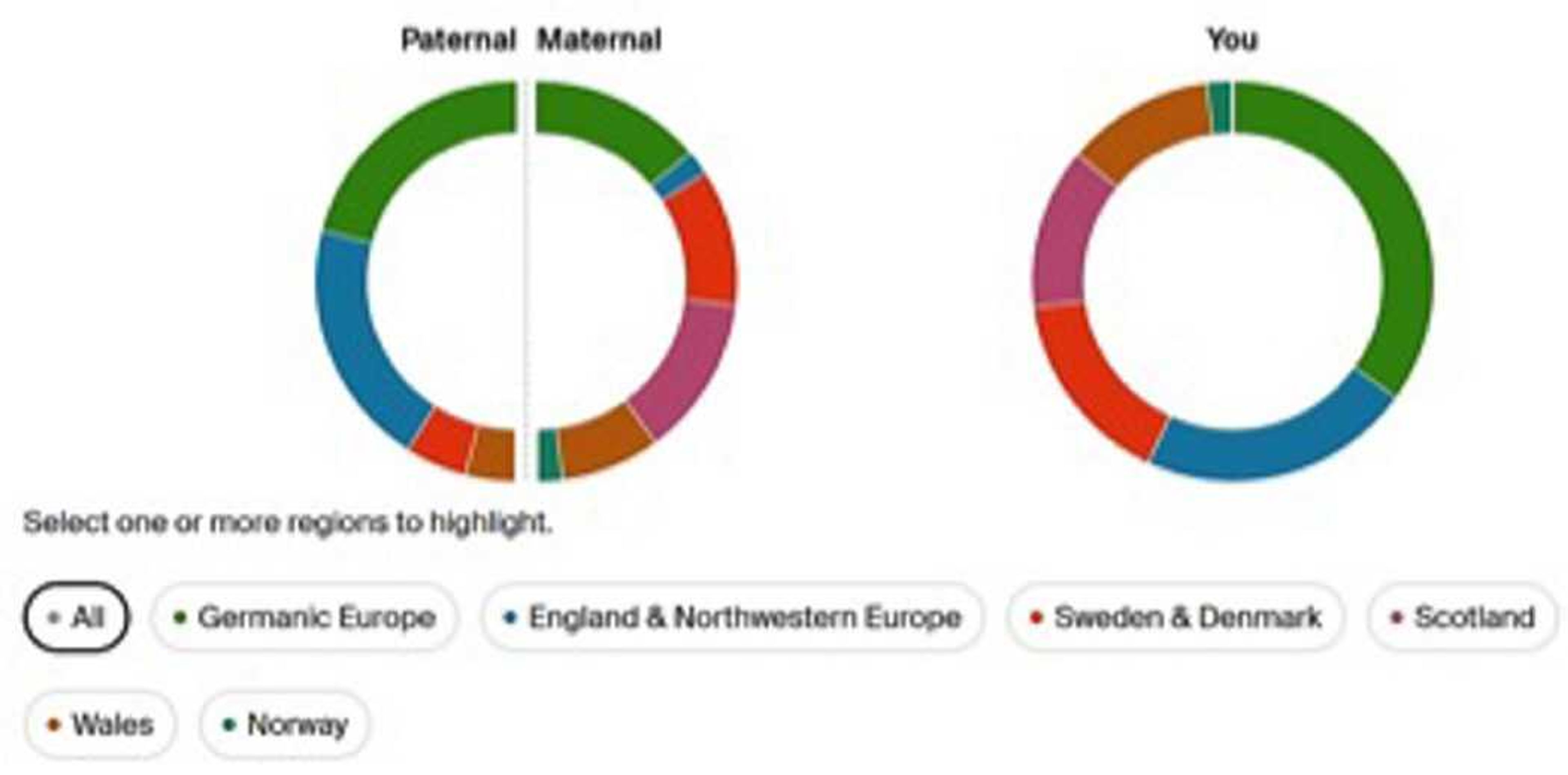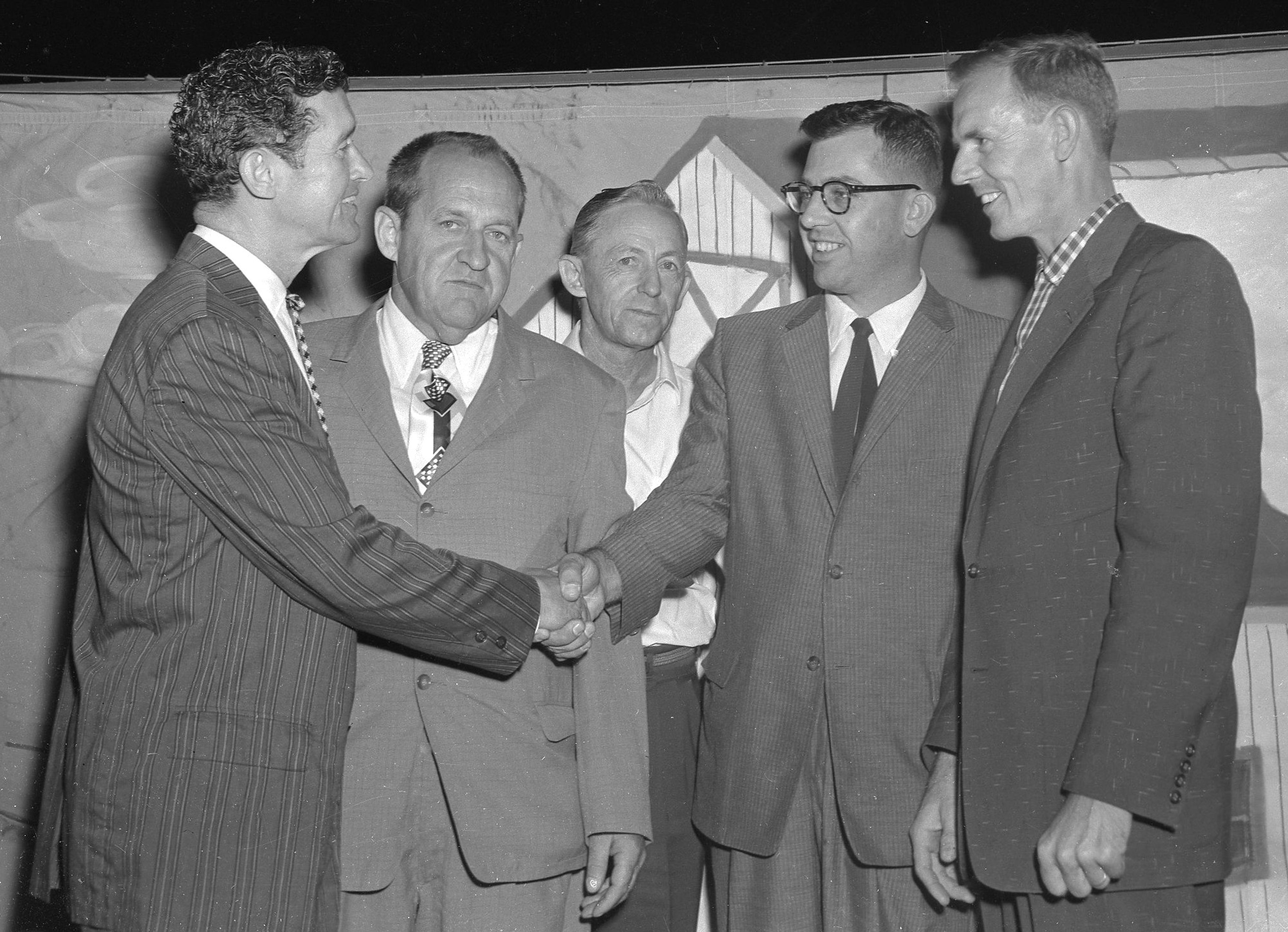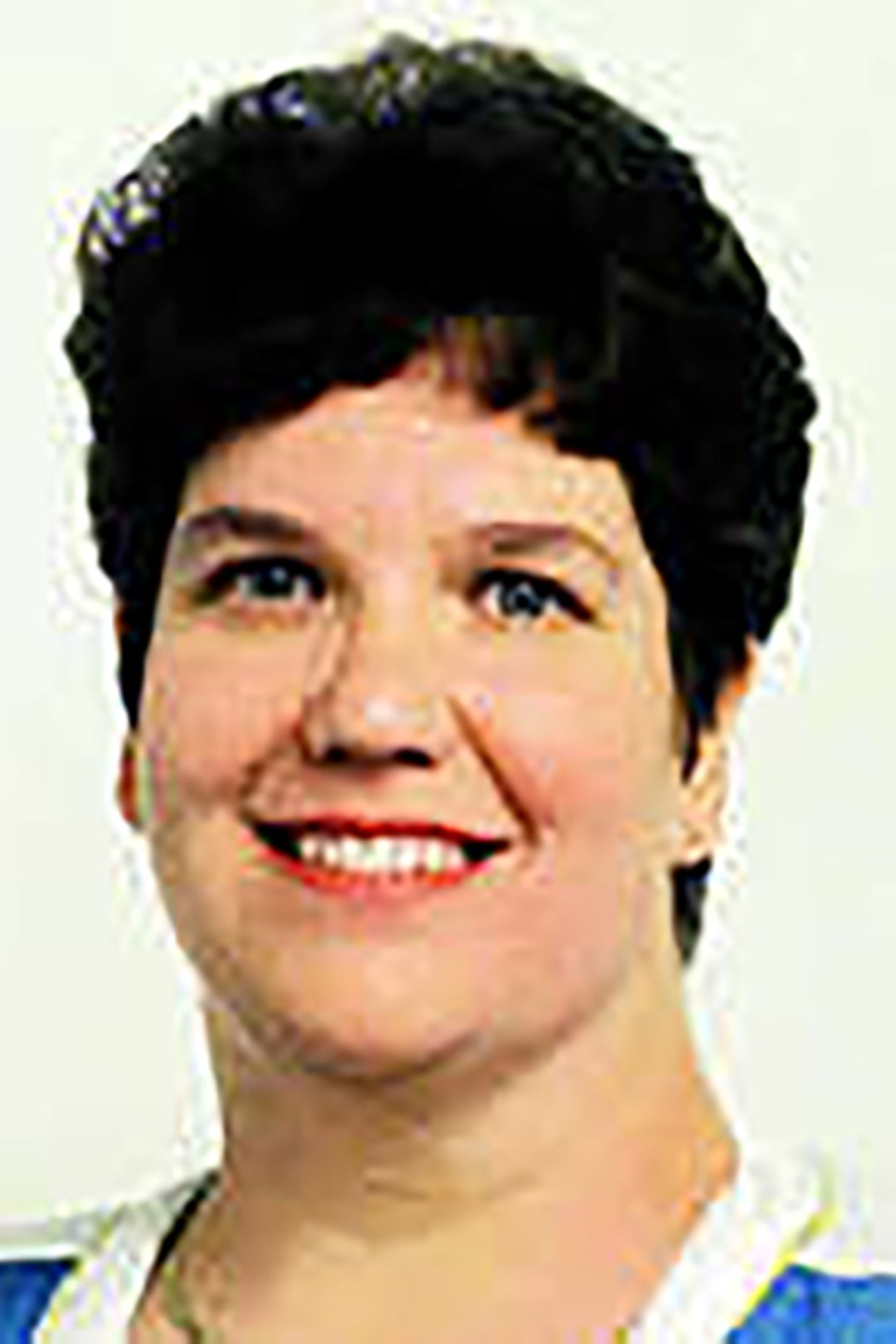Before you test your DNA, you should have a good reason for testing. For example, while most testers do so to obtain ethnicity estimates, this is mainly for entertainment value and is often not particularly useful for family history. Furthermore, if the reference population increases, there may be adjustments in percentages. The example in the illustration is for a person who originally had no Scandinavian ancestry indicated, yet now comprises around 15%.
It is best to test to answer a genealogical question. As one example, a genealogist might ask her brother to test his Y-DNA to determine if another man with the same surname who has confirmed ancestors has the same paternal ancestry. You should decide in advance which type of test will answer your question. That may guide which company you select for your test.
Second, be aware that the results of DNA testing may reveal surprises. Sometimes test takers have found their father is not their genetic parent, for example. If this sort of discovery might be extremely upsetting, then do not test!
Five principal companies provide DNA testing for those interested in genealogy: 23andMe, Family Tree DNA, Ancestry.com, MyHeritage and Living DNA. Costs vary, but companies offer seasonal sales or special offers. Some key features of each include emphasis on detecting genetic diseases by 23andMe, Y-DNA and mitochondrial DNA tests offered by Family Tree DNA, and the large pool of test takers using Ancestry.com. I recommend consulting the International Society of Genetic Genealogy's comparison table at: isogg.org/wiki/Autosomal_DNA_testing_comparison_chart.
Once you decide to test and have paid the fee for the test, the company sends a kit for sampling and returning your DNA. Ancestry.com and 23andMe work with a saliva sample and the others use cells sampled from your cheek lining using a swab. A key thing you should consider is privacy, which the company explains in materials provided in the kit. The companies typically have different privacy levels -- the stricter levels often restrict what you can do with the results.
Processing the samples takes time -- be patient. All the companies have protocols that result in near-zero errors. The company sends you results or provides them via your account online. Depending on the company, you can view persons who match with you and the number of centimorgans of each match. Each company provides ways to contact matches, but the response rate is poor to mediocre. Keep in mind most people are interested in their ethnicity estimate, and not contacting matches.
You can increase your pool of matches by uploading your results to other companies in some cases, or to the service GEDmatch. GEDmatch is a service that provides additional tools for using your DNA results at: gedmatch.com/.
Once you set up your free account at GEDmatch, prompts lead you through the process of uploading your DNA results. There are free tools to assist you with matching your DNA with potential relatives. Again, pay attention to the privacy settings. Law enforcement agencies, for example, sometimes use this service to locate criminals or their relatives, and you can choose to opt out of that possibility.
Testing companies have tools to explore your DNA results and matching with the DNA of other testers. These are often free but may require additional fees in other cases. Additionally, other third-party tools provide additional routes to using your DNA results. The Shared Centimorgan Project, created by genetic genealogist Blaine Bettinger, is one of the simplest, with access at: dnapainter.com/tools/sharedcmv4. If you know the number of centimorgans you share with another tester, you can enter that number in the project, and receive the probability of different relationships with the other tester. For example, if you share 1100 cM with another tester, there is a 98% probability the tester is a first cousin, great-grandparent, great aunt/uncle, half aunt/uncle or similar relationship. There are other third-party tools discussed in books or online videos.
In conclusion, there are other things you should consider with genetic genealogy. DNA is not the magic answer to all the lines where you are "stuck." Use the information as one more piece of the puzzle that includes other records in documents. If you do not understand something about your DNA test, ASK! The companies will be happy to provide you with clarification. It is important to test older relatives while they are still with us. After all, they may be up to three generations closer to that ancestor who has you perplexed. Finally, as with any skill, using results of DNA testing improves with practice. That includes reading current information about genetic genealogy, attending workshops and viewing online videos on YouTube or other sites. Best of luck if you choose to test!









